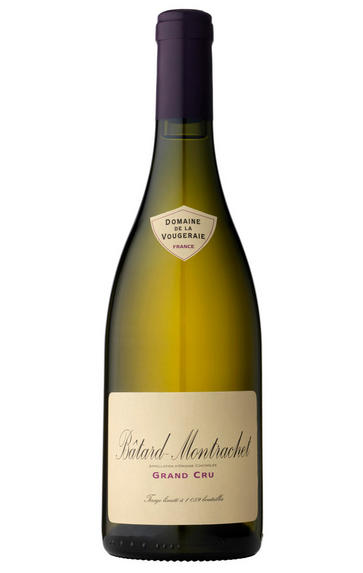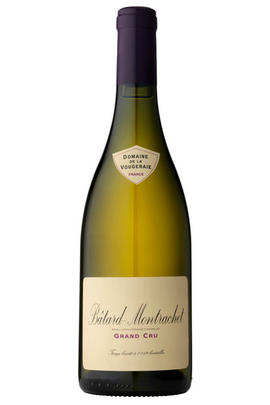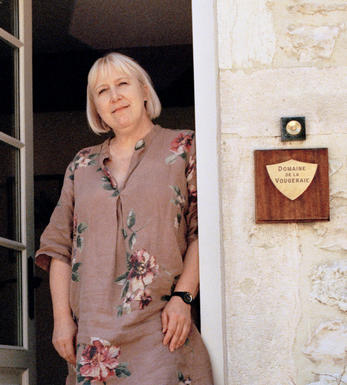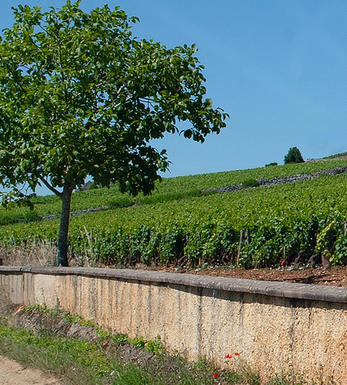
2014 Bâtard-Montrachet, Grand Cru, Domaine de la Vougeraie, Burgundy

Critics reviews
Neal Martin - 31/10/2017
About this WINE

Domaine de la Vougeraie
Domaine de la Vougeraie is part of our Spotlight on sustainability series. You can view the full range here.
Domaine de la Vougeraie, based in Premeaux just south of Nuits St Georges, was created in 1999 when Jean-Claude Boisset of the Boisset group decided to group together all the vineyard holdings of his various negociant companies acquired over the years. The name comes from the significant holdings – and indeed Jean-Claude Boisset’s home – in the village of Vougeot. The winery is located however in the old Claudine Deschamps (Madame Jean-Claude Boisset) cellars in Prémeaux. The domaine was put together from the various vineyard holdings which had accrued through the Boisset acquisitions of Burgundian houses over the years. Pascal Marchand was put in charge in 1999, with Bernard Zito in the vineyards, which were farmed biodynamically. Pascal produced powerful wines, fairly heavily extracted in his early vintages but clearly was subsequently moving to a softer approach by 2004.
With nearly 40 hectares of vineyard and over 30 different appellations, including six grand crus (Musigny, Bonnes Mares, Clos Vougeot, Charmes Chambertin, Mazoyères, Corton Clos du Roi and Corton Charlemagne), this is one of Burgundy’s leading domaines.
No expense has been spared in production terms. The premier and grand cru vineyards are all farmed biodynamically with carefully limited yields. The cellar has been equipped with a battery of new or renovated wooden fermentation vats, a state of the art sorting table and a new model of the old fashioned vertical press which is thought to be the best option for red wines. The wines were made by Pascal Marchand of Comte Armand in Pommard, from 1999 to 2005 and subsequently by Pierre Vincent who has maintained the more delicate approach. The grapes are sorted on one of the longest tables de tri I have seen, before being given a cool pre-maceration. During fermentation Pierre punches down only once a day, much less than Pascal used to. The temperature is maintained at 26º-28ºC/79-81ºF after fermentation to polymerise the tannins and fix the colour. The Musigny is destemmed by hand. Starting in 2008 he has begun to experiment with some whole bunch fermentation, though only for a proportion of a given cuvée.

Bâtard-Montrachet
Renowned for its exceptional white wines, Bâtard-Montrachet is a Grand Cru appellation, situated in the heart of the Côte de Beaune subregion of the larger Côte-d'Or department. The vineyards are nestled between the villages of Puligny-Montrachet and Chassagne-Montrachet.
The terroir is characterised by a mixture of limestone and clay soils, with a significant proportion of limestone, which contributes to the unique mineral character of the wines. The region benefits from a continental climate with some influence from the nearby Saône River, providing ideal conditions for cultivating Chardonnay grapes.
The wines are celebrated for their complexity, richness, and intensity and typically exhibit ripe fruit flavours such as citrus, pear, and peach, along with notes of hazelnut, honey, and minerals. Bâtard-Montrachet wines are known for their exceptional ageing potential, often improving and developing more complexity over many years in the bottle.

Chardonnay
Chardonnay is often seen as the king of white wine grapes and one of the most widely planted in the world It is suited to a wide variety of soils, though it excels in soils with a high limestone content as found in Champagne, Chablis, and the Côte D`Or.
Burgundy is Chardonnay's spiritual home and the best White Burgundies are dry, rich, honeyed wines with marvellous poise, elegance and balance. They are unquestionably the finest dry white wines in the world. Chardonnay plays a crucial role in the Champagne blend, providing structure and finesse, and is the sole grape in Blanc de Blancs.
It is quantitatively important in California and Australia, is widely planted in Chile and South Africa, and is the second most widely planted grape in New Zealand. In warm climates Chardonnay has a tendency to develop very high sugar levels during the final stages of ripening and this can occur at the expense of acidity. Late picking is a common problem and can result in blowsy and flabby wines that lack structure and definition.
Recently in the New World, we have seen a move towards more elegant, better- balanced and less oak-driven Chardonnays, and this is to be welcomed.


Buying options
Add to wishlist
Description
This wine was in a very backward state when we tasted in November, so the detail of the fruit was not evident; however the desired weight of fruit is certainly there. It has an enormous concentration on the palate, completed by sparkling acidity and energy. Potentially mind-blowing.
The domaine has developed its white wine holdings, with four new cuvées this year, arising out of Boisset’s purchase of Vincent Girardin’s business. Girardin had farming arrangements in Puligny- Montrachet, Puligny-Montrachet Champ Gain Premier Cru, Bienvenues-Bâtard- Montrachet Grand Cru and a tiny holding of Chevalier-Montrachet: Monsieur Boisset has now bought these vineyards. As well as these excellent whites, Pierre Vincent considers 2014 to be one of his best red wine vintages, with something in common with 2006 and 2010.
wine at a glance
Delivery and quality guarantee